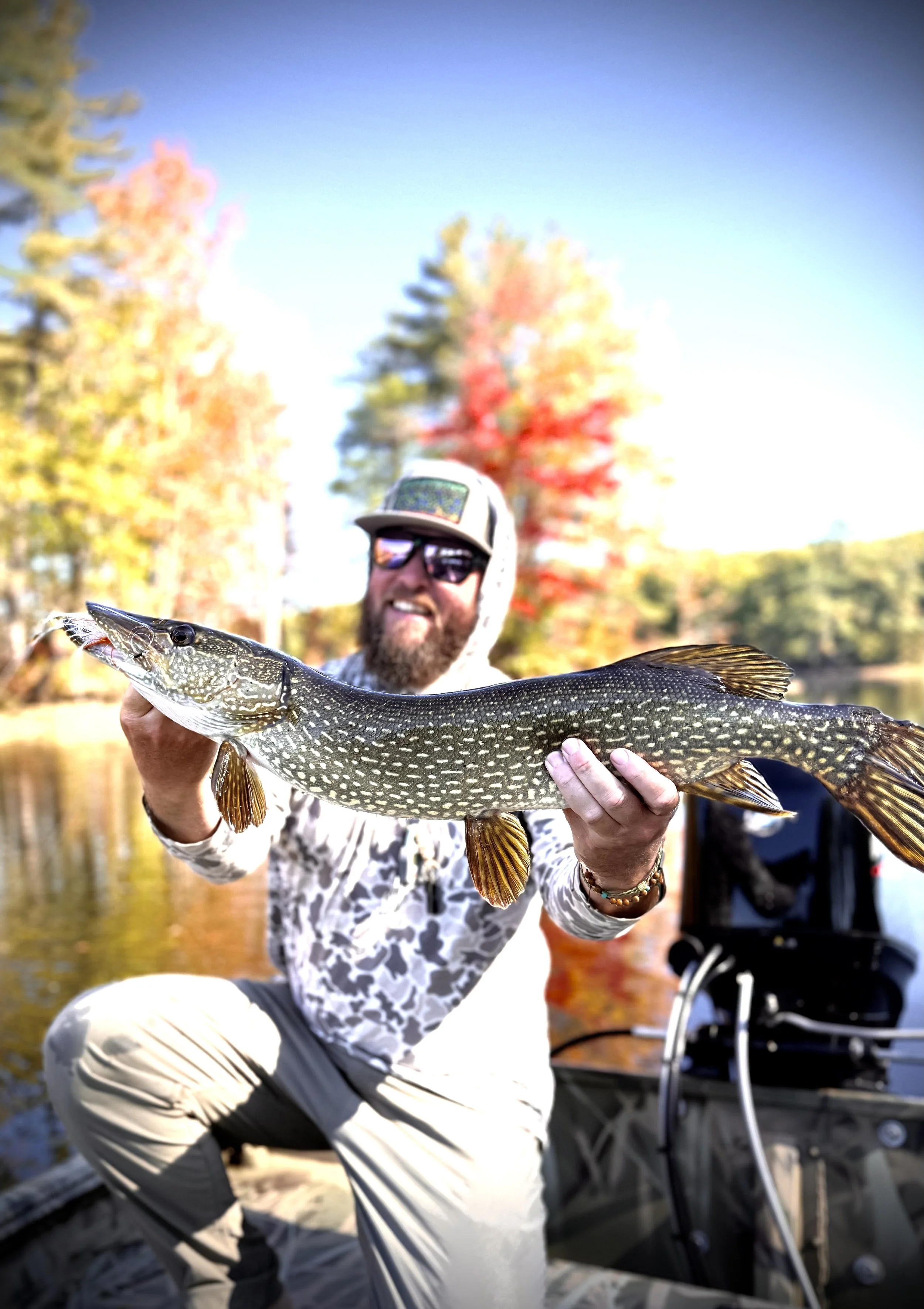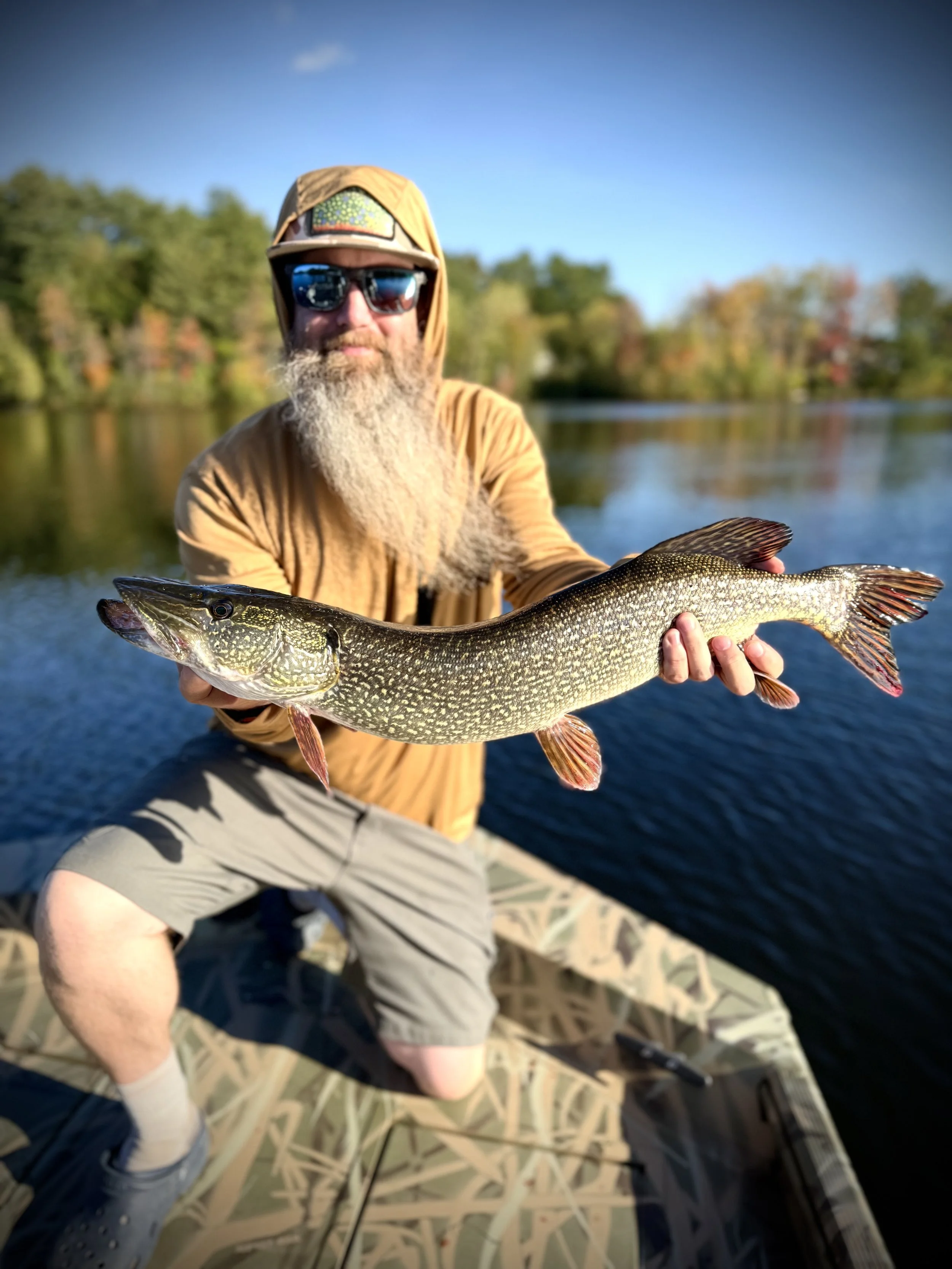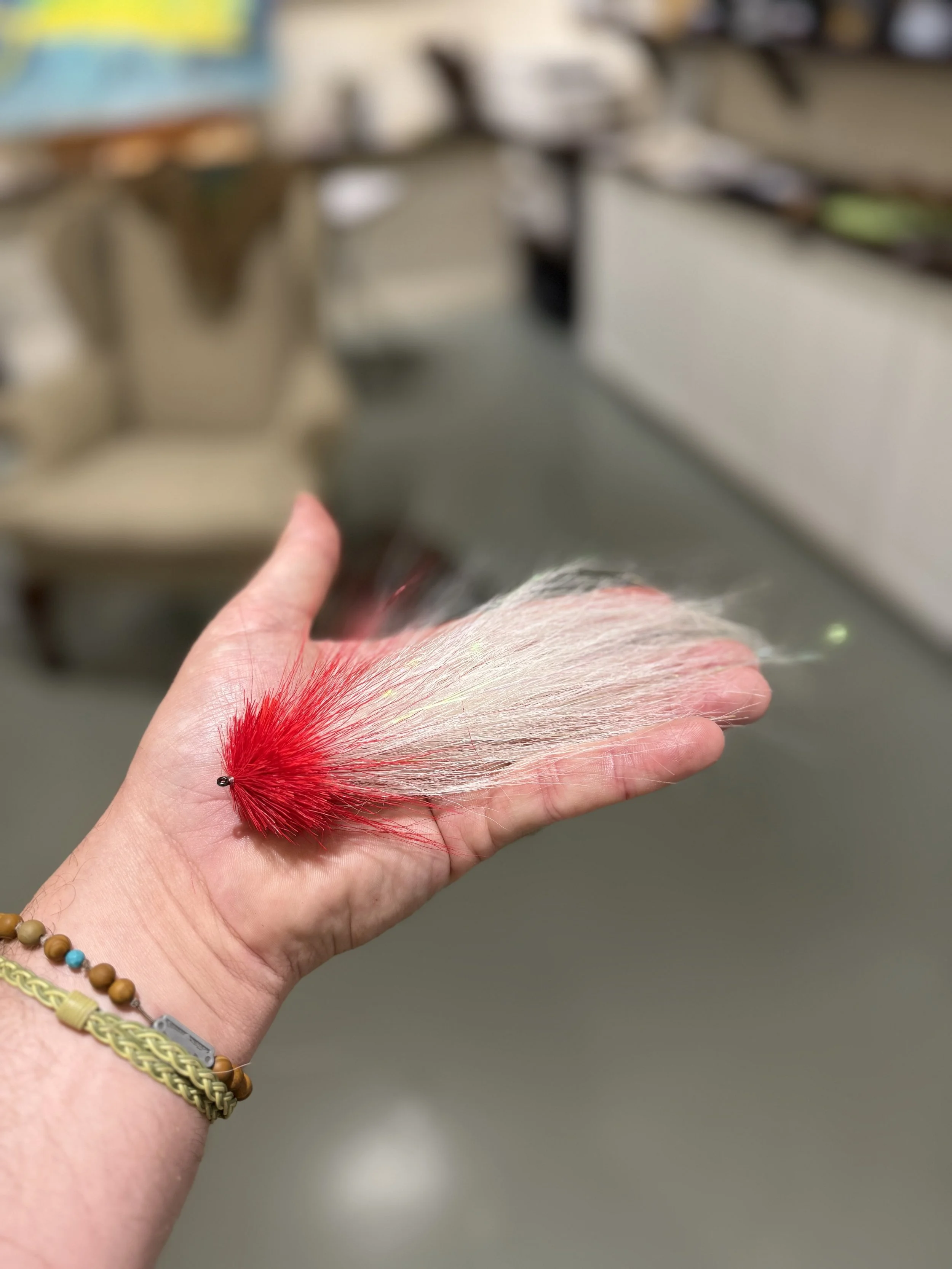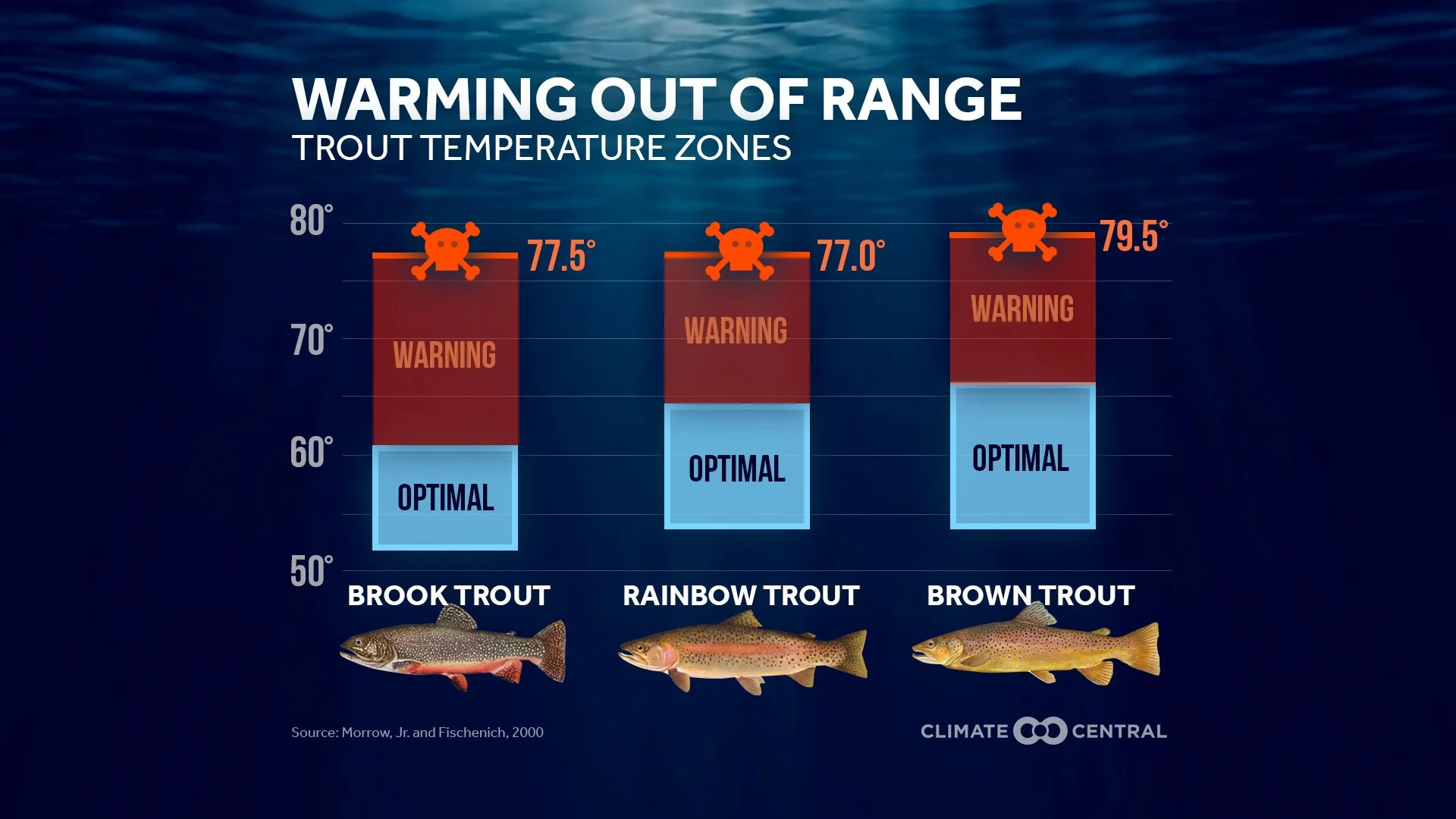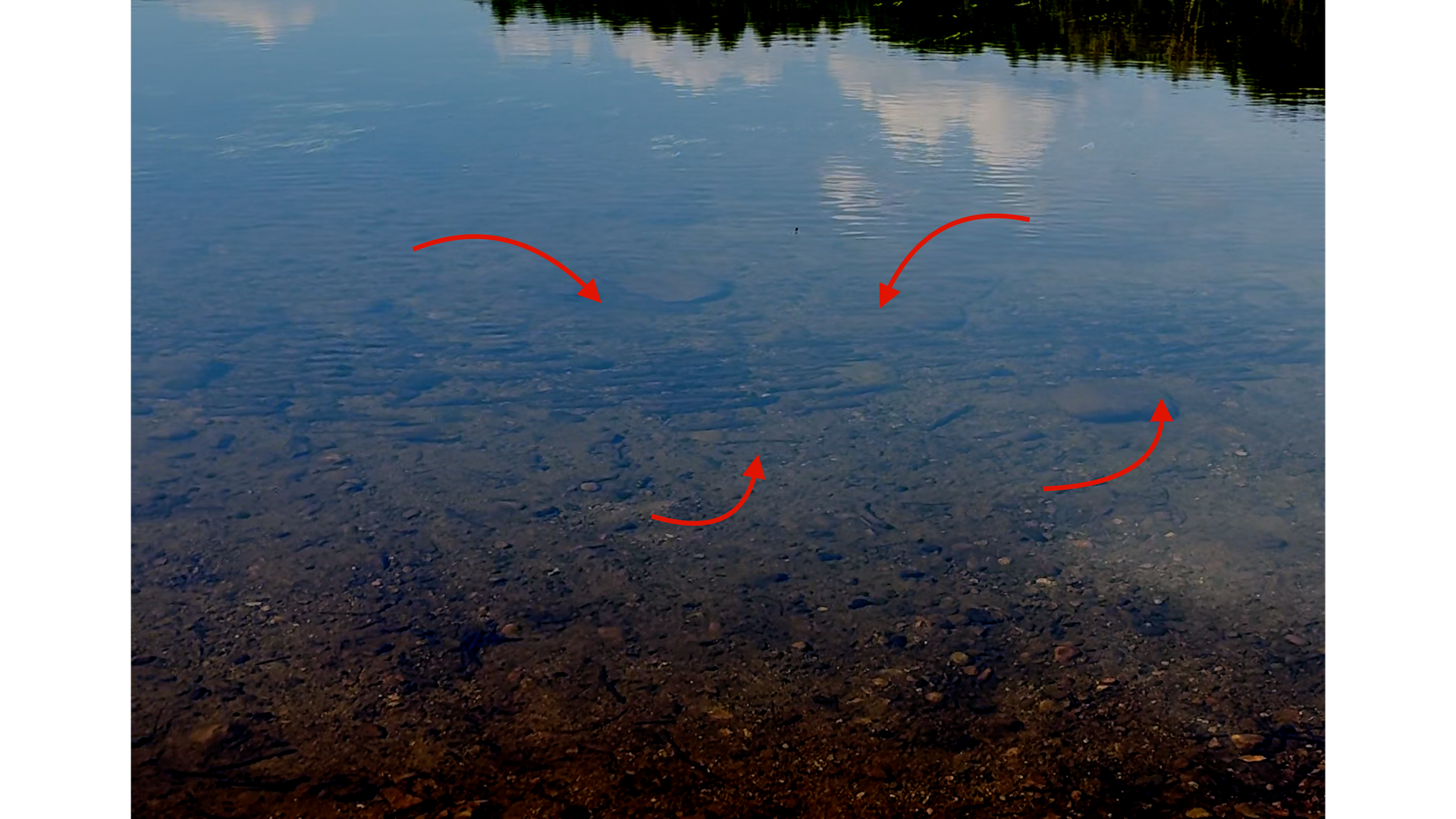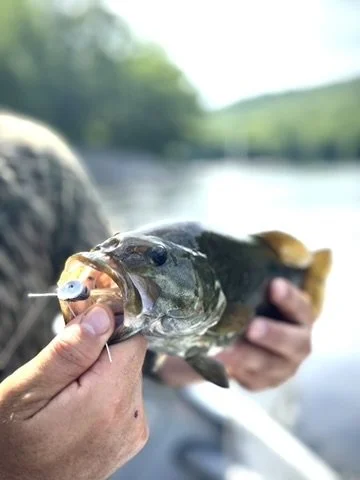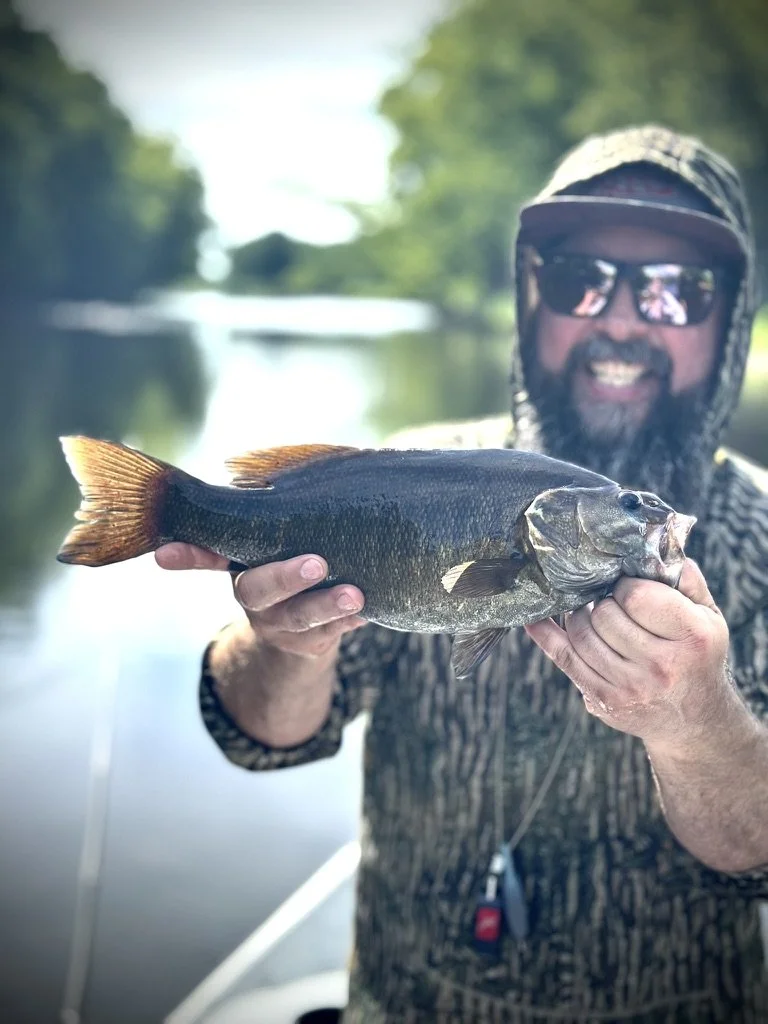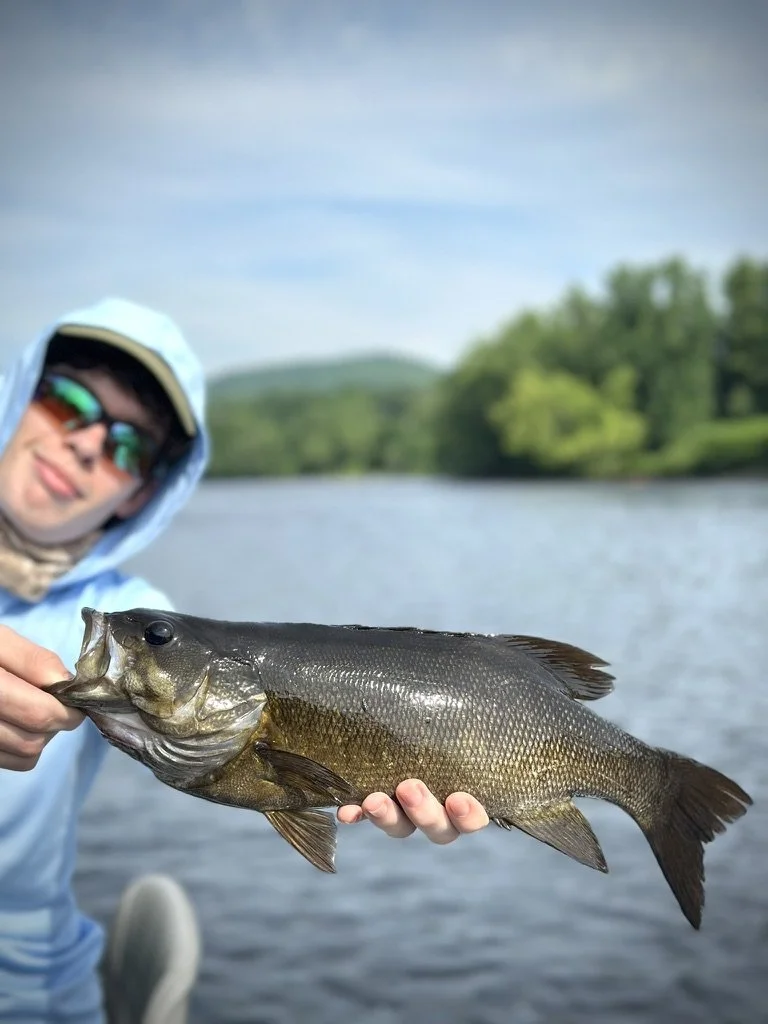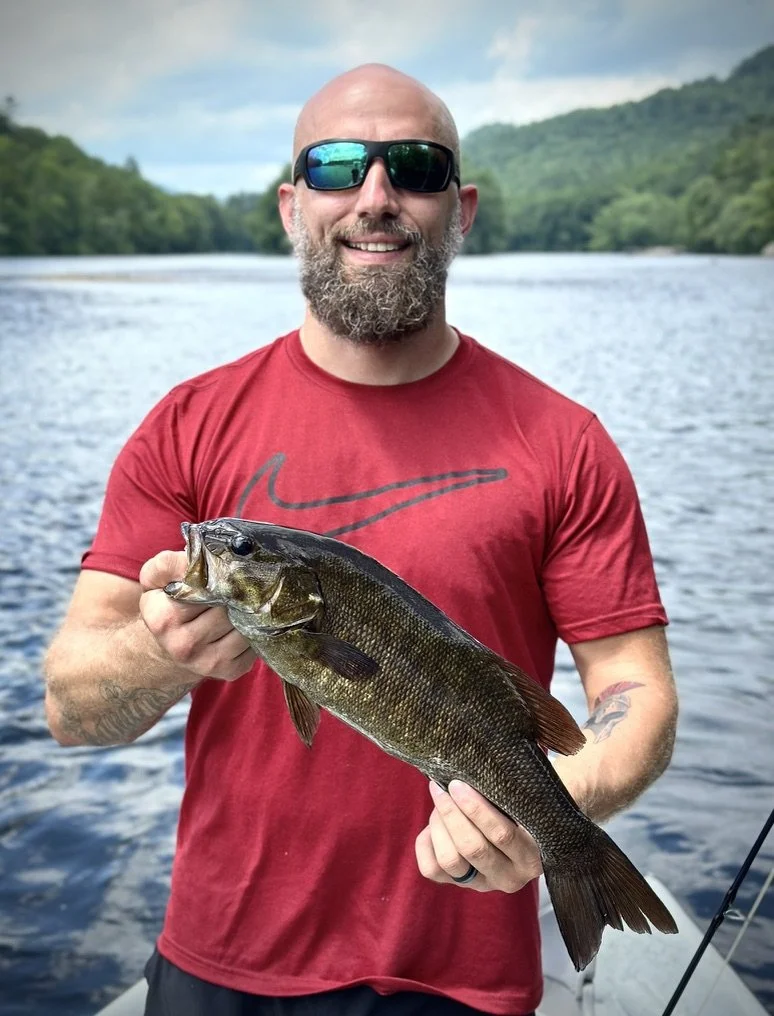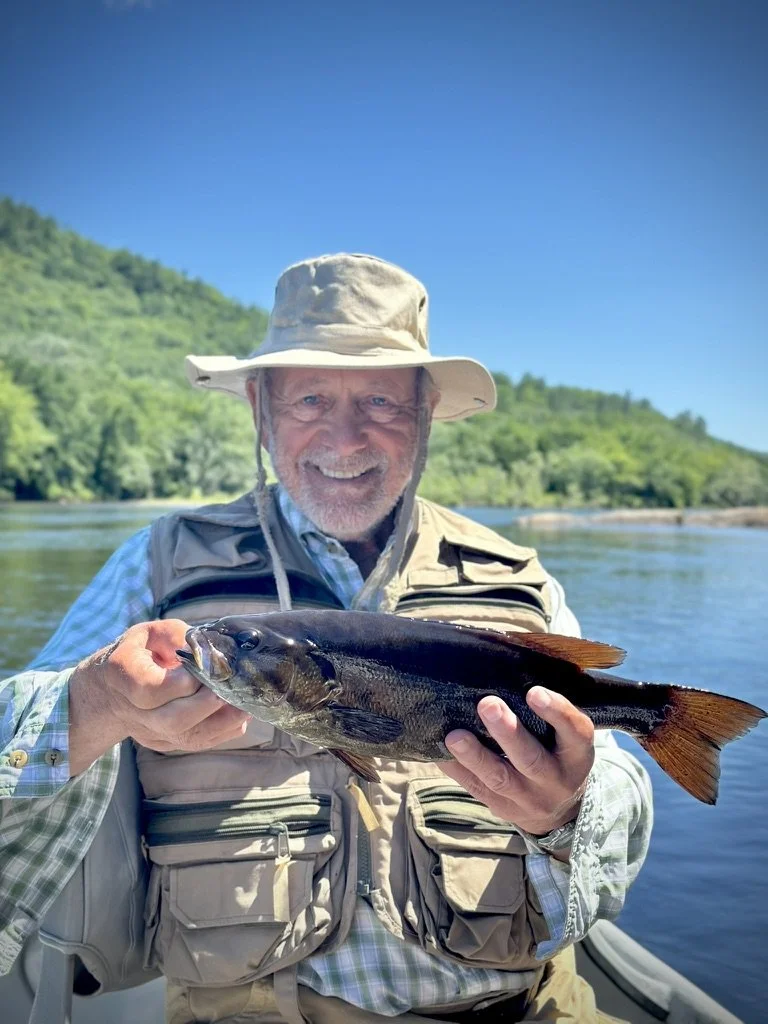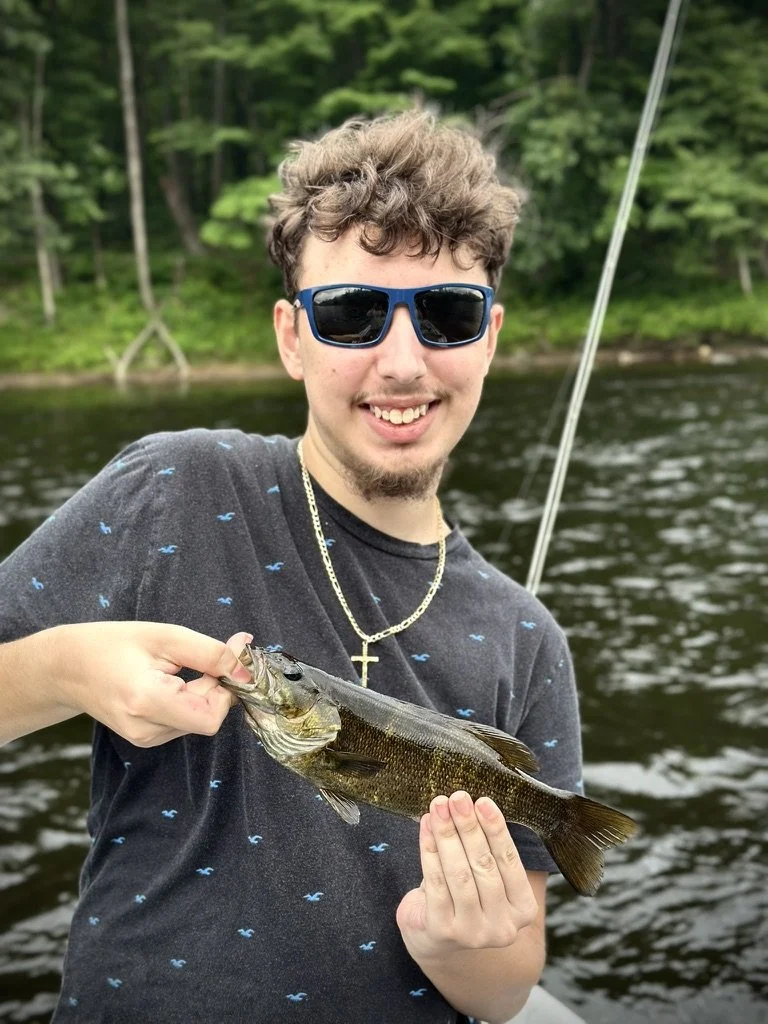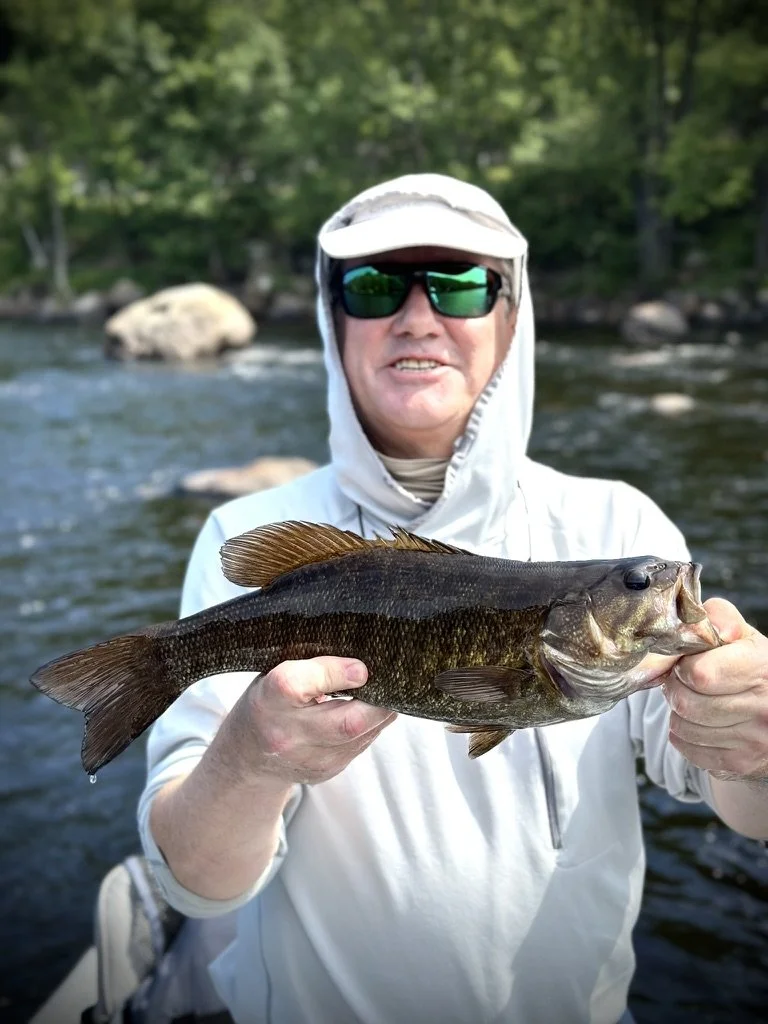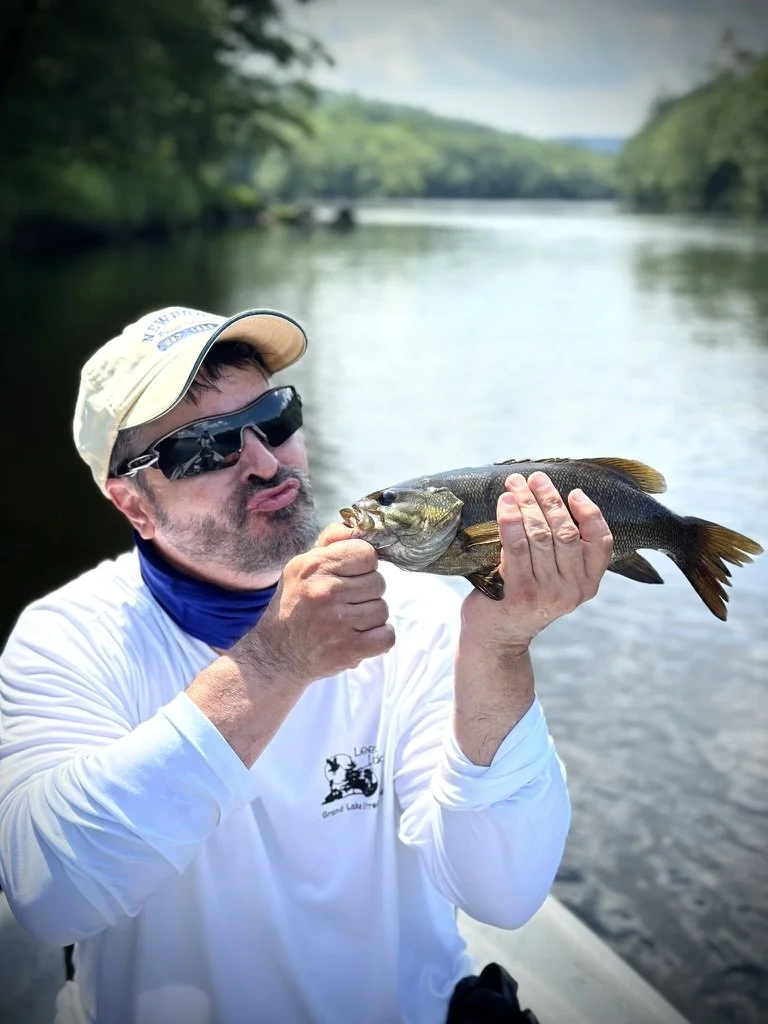Fly Fishing for Big Pike, in the Fall, on the Androscoggin River!
See how the fall pike fishing has been? A new boat has opened up water that Alex and crew can access and guide for this large exciting freshwater fish. The Androscoggin River is a great trophy fish location.
Fall is here in Maine and I find myself enjoying the change of season. We had an extremely hot and dry summer and I wore tired of it. Though we had great smallmouth fishing for large fish on topwater, the recent cool mornings and crisp days feel invigorating. With the fall we all obviously enjoy the trout waters turning back on after the water cools. However, pike is an often overlooked gamefish to chase in the cold weather too. For those who love streamer fishing or fly fishing for striped bass, it is a natural jump to make. Large predatory fish lurking in the shadows waiting to intercept your offering. Takes can vary from slow chases to all out fly eating blitzes.
Pike reside in the Androscoggin River from Livermore Falls all the way to Merrymeeting Bay. They are a widely dispersed fish in the river system and their spread density lends itself to true trophy fish. The varied forage on the Androscoggin definitely makes fly selection fun. Imitating fallfish, perch, crappie, sunfish, smallmouth, suckers, and other pike make for a varied fly box full of as many colors as the fall trees produce. If you enjoy fishing large flies, fall is your time to shine. Deer hair flies tied hollow style, big Buford style heads, squimpish hair, articulated shanks, all are your friend in creating pike flies. Flies that push water, have wiggle, or erratic movements are what you need.
To better reach the pike haunts of the Androscoggin I recently acquired a new jet boat. It allows me to target hard to reach areas and have plenty of room for gear. With the large casting decks we are able to have ample room to cast large flies, heavy weight rods, and enjoy the elevated perspective when a large pike explodes on your fly. Nothing beats fly fishing from a drift boat, but a more mobile boat, capable of speed is a luxury I am happy to now offer clients.
As I write this I can’t help but have excitement looking forward to short fall days filled with morning frosts, the smell of fall leaves on the water, big flies, hot coffee, warm lunch soups, large schools of bait, friends, eagles watching, oh and pike!
Reach out if a pike trip is on your radar!
Warm Water...Low Flows...What Does This Mean To Trout?
Warm Water….Low Flows…..What does this all mean for trout.
THE JOURNEY
Let me start with my personal journey regarding fishing for trout and my growing concern with water temps, flows, and my impact. Let’s start at the beginning. My journey began at the age of 5 fishing for small brook trout in the stream behind my house. It was an amazing era to be a child and great place to grow up. I was allowed to explore the stream alone as long as I didn’t stray too far. I can remember peaking through the ferns, over the bank, to trout in small plunge pools and hiding under overhanging banks. This is where my love of fishing began. My goal was always to catch the big one and in those days I ate any keepers I caught. I knew how to gut and cook a trout at a very early age and did so often. The value of fish = food and also fish = fun was in full swing.
Fast forward to today. I am a guide and avid fly fisherman and my abilities to catch trout/fish has advanced. The negative impact I am capable of has increased due to my ability to catch more fish, bigger fish, and do so consistently. My “value” of trout has shifted from my early days. Now it is fish = fun mostly. However, I have also reached a point where fish = giving back. What does that mean? I have loved my home waters in Maine for a very long time and now I care more about fisheries health, sustainability, habitat improvement, and management more than ever. This is were the topic on WARM WATER and trout come out to play
WHAT IS WARM WATER?
Warm water for trout is whenever the temp reaches a point that stress takes place. This temp is different for the varying species of trout, but for this write up, lets focus on brook trout, rainbow trout, and brown trout in RIVERS exclusively. I emphasize rivers exclusively because cold water is easier to find in lakes and ponds that stratify. In rivers that is harder and trout rely on cold water tributaries and springs. However, below you will find a chart that shows the different lethal limits for trout species and when stress takes place.
Brook trout require the coldest water, than rainbow trout, followed by brown trout. As we see warming trends throughout the country paired with drought, these ranges are very important to note. Here on my home waters of the Androscoggin River I do not guide or fish for trout when we hit the stress range for rainbow trout. Normally this happens in late June but does vary due to weather. Thermometers are your best friend! They give the real truth when it comes to ‘warm water”.
ETHICAL PRACTICES?
So lets say that the water is 72 degrees. This is well below the lethal limit for brown and rainbow trout. Does this mean you should fish for them? The answer is no. The energy and oxygen depletion is too high to recover from. That trout may be able to live for a period of time in that warm water if left alone. But the expenditure in warm water temps like that will be too much to recover from. Many trout caught and released in warm water die. I will note we are talking rivers and not lakes and ponds. Rivers do not stratify like a lake or pond. Meaning rivers stay warm through out the water column and rely on springs and tributaries to bring in cold water refuge areas. Where as a cold water lake will stratify and have abundant cold water 15-25ft down. This makes it easier for trout to survive warm spells in a lake than a river.
Below are some examples of what cold water refuge can look like. Carry a thermometer, check the surrounding temps. If they are within the trouts stress range move on. It is important to note that even though the water they are in may be cold enough for them to survive or even outside of their stress range, leave them alone. They are in this location for a reason. SURVIVAL. You can fish for them another day, when the temps are in optimal ranges.
When trout are stacked up like this in full sun and shallow water……….it is a good indication of cold water refuge. Move on leave them alone.
Another prime example of vulnerable river trout sitting in a cold water refuge seam.
Ok now lets take this a step further. Enter the Catch-n-Release guy. I am one of them. I believe that it is a great practice in the conservation of trout. Especially when practiced correctly. Let me elaborate. When I first started the practice it was early in my fly fishing career. I had no one mentoring me at the time. I did not know about trouts lethal limits in regard to warm water. I just wanted to catch trout and catch as many as possible. I thought that if a trout swam away it was “good”. I fished all summer in my usual spots. I also found other productive areas and fished them a ton, in the hot weather. I did not know at the time that trout were there for a reason. Turns out these were some of the cold water refuge spots I avoid today in hot times. I now check on these areas to see what the water temps are doing. I also try to take note of if these areas are being exploited. Which they definitely are. My point is………Catch-n-Release just isn’t enough. You need to recognize when and where it is ok to fish and when it isn’t. I see it a bunch in the fly fishing world where people have a certain river they enjoy fishing and they won’t fish another river. They also fish it every weekend, no matter the conditions. I was no different. Now I take the opportunity to learn new species, fisheries, tactics, presentations. Here in Maine we have, smallmouth, pike, carp, sunfish, stripers! Plus other species as well. If you look in your home state, you too can find new skills and species. Who knows you could innovate fishing for a new species in your area. My point is, mix it up. Become a better more well rounded fisherman. Don’t be the tight line nymph guy who can’t cast further than 20ft. Don’t be the dry fly guy who cast cast a sinking streamer line. Try new things when trout waters get hot and you may be surprised. Surprised at your new found skills and you may find another species you love to fish for!
Summer Fly Fishing Report on the Androscoggin River
Smallmouth, Smallmouth, Smallmouth!
We went from high water to low water very fast this year. But no worries, we have been targeting smallmouth with clients on the Androscoggin. It is important to watch weather patterns with smallmouth. From my experience I find smallmouth to be even more reactive to pressure drops and spikes than trout. However, when we have had stable pressure or drops before storms the topwater bite has been quite good. Clients have enjoyed the excitement of popper, slider, and gurgler bites on top! Of course streamer fishing is always a productive way to target smallmouth, especially when the weather puts them down or they seek deep water. For the more adept caster we prefer sinking lines and large unweighted flies that are articulated and move freely. For those who prefer floating lines or are newer casters, wooly buggers, clousers, dragon fly nymphs, etc. work very well. We will also be getting into terrestrial season and chubbys, beetles, and dragonfly dries will all be productive, just as they are on trout.
Baby squirrel coughed up in the net by an 18” smallmouth!
I am always amazed by how opportunistic smallmouth are as feeders. When conditions are right and they are “on the feed” nothing is safe. This makes the takes on large streamers and poppers fun! The 18” smallie that coughed up the baby squirrel above was under a large overhanging silver maple. The tree extended 20 ft out over the river and provided shade for the smallie to hide in. When the popper was airborne and about to start its decent to the water, I saw a back rushing toward the airborne popper. The V-shaped wake raced 4-5 feet to intercept the popper the moment it hit the water. This bass was anticipating squirrels to drop from the tree. Most likely he experienced one very lucky meal dropping from the sky and wanted another. Situations like this really make you ponder the intelligence of smallmouth as a species and their ability to learn how to target certain food sources. Topwater bites are just simply the best!
I feel very lucky to able to help connect clients to the outdoors and show them the amazing fishery we have for these strong fighting fish! Take a peek at some of the fins and smiles from this summer so far!
Don’t hesitate to reach out with trip questions! We offer half day and full day floats. All trips are by drift boat. Shore lunch provided on full day trips. If you have a large group we can most likely accommodate that as well.
As always thanks for supporting my art and guiding businesses!
Alex
Western Maine Fishing Report
April and May have brought lots of rain and cool temps! This has made flows on the Androscoggin tough at times but should give us cool water later into summer. When the flows have been fishable we have been able to fool some really sizable wild and holdover trout. Caddis and Henricksons have been ramping up, though the fish have not been looking to the surface yet. Spring is such a great time to get out and enjoy the river from a drift boat. Things should be heating up even more in the coming weeks. Smallmouth fishing is going to start turning on as well once the water crests 60 degrees. Hope to see you out there or reach out if you would like a trip.
-Alex


